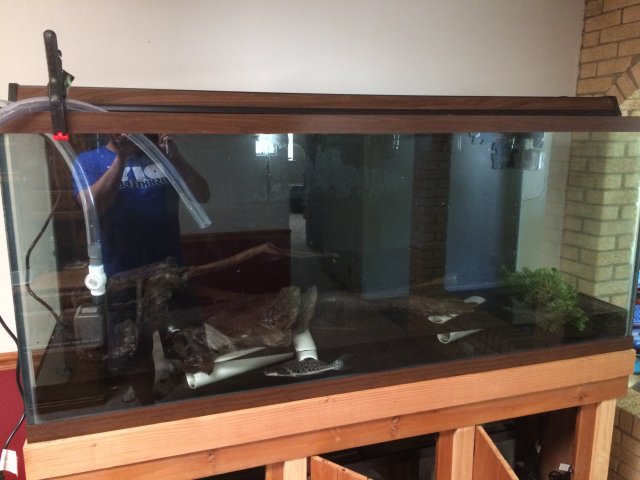Nitrates aren't completely removed unless you remove all the water in the tank and start with fresh water, because, assuming you feed your fish the same amount each week, they will produce the same amount of nitrate between each water change.
As an example, if your tank makes 20ppm of nitrate weekly, doing a 50% water will dilute the nitrate to 10ppm. The next week, before you change the water, the nitrate is at 30ppm. This is because it was 10ppm at the beginning of the week, and then the fish added another 20ppm by the end of the week. This will always happen unless you change all the water. Larger waterchanges only delay the rise in nitrate.
The equation for dilution is (C₁ x V₁) = (C₂ x V₂)
C₁ = Concentration before dilution, in this instance nitrate concentration.
V₁ = Volume before dilution, but for water changes you use the amount of water left after the water is removed but before it's refilled (if you had a 100 gallon tank, and you did a 20% water change, then 80 would be plugged into V₁. Whatever % of the water you change from your tank, you convert it into a 2 digit decimal (20% = 0.20, 64% = 0.64. etc...), subtract it from 1, then plug the difference into V₁. For example, .95 would be used for a 5% water change, .63 would be used for a 37% water change, etc...).
C₂ = Final concentration of nitrate, after the water change is done. This is the variable that's being solved for.
V₂ = Final volume, the amount of water in the tank after the water change.
If you do 30% water changes weekly, and your fish create 20ppm of nitrate each week, then your nitrate would be 14 after the first week, 23.8 after the secondweek, then 30.66, 35.462, 38.8234, etc... By the time it hits 45 nitrates (just in this instance, not for every tank), it slows down to +0.1ppm per week. Although it may plateau at 45ppm, this is still quite a high amount,especially for a tank with a good water change schedule. Most people only do weekly water changes, and usually weekly water changes result in a higher nitrate plateau.
(C₁ x V₁) = (C₂ x V₂)
↓
(20 x 84) = (C₂ x 120)
↓
(1680) = (C₂ x 120)
↓
(1680) = (C₂ x 120)
-----------------------
120
↓
(14) = (C₂ x 1)
↓
14 = C₂
Smaller water changes done more often are more efficient than large weekly water changes, as long as each water change is 1/3 the amount you would do weekly. For example, if you did 10% water changes every day on a tank that produced 20ppm of nitrate weekly, something that would take less than 5 minutes for the average sized aquarium, the nitrate would be 13.4ppm rather than 14ppm. Although this change may seem insignificant, it reduces the nitrate plateau to 25ppm from 45ppm.
The absolute most efficient water change schedule is the weekly amount changed daily. Even as little as a 30% water change done daily on a tank that produces 12ppm of nitrate per day, or 84 per week, can keep the nitrate plateau at 30ppm, which is incredibly low for atank that creates such a high amount of nitrate.









